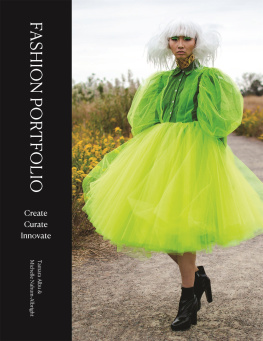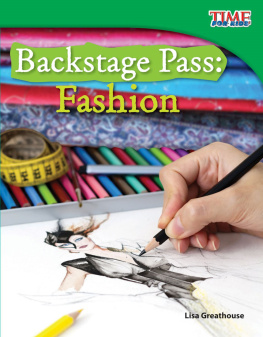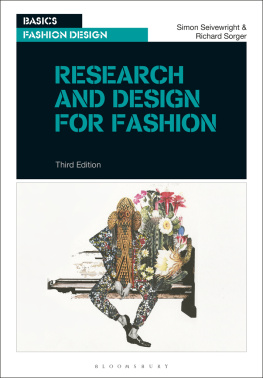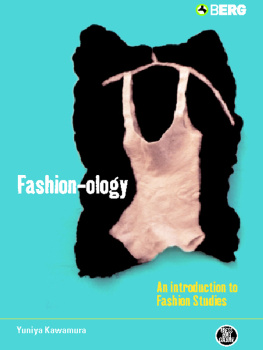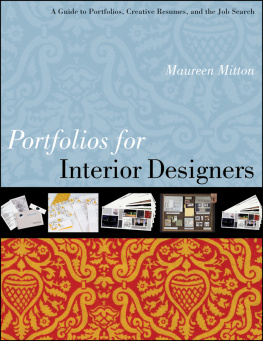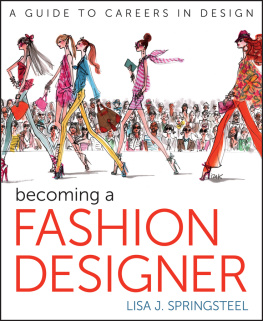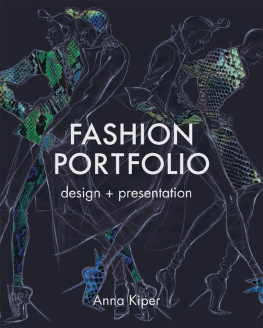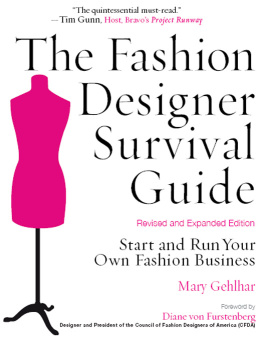Contents
Guide
FASHION PORTFOLIO
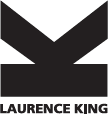
First published in Great Britain in 2023 by
Laurence King Student & Professional
An imprint of Quercus Editions Ltd
Carmelite House
50 Victoria Embankment
London EC4Y 0DZ
An Hachette UK company
Copyright Text 2023 Tamara Albu and
Michelle Nahum-Albright
The moral right of Tamara Albu and Michelle Nahum-Albright to be identified as the authors of this work has been asserted in accordance with the Copyright, Designs and Patents Act, 1988.
All rights reserved. No part of this publication may be reproduced or transmitted in any form or by any means, electronic or mechanical, including photocopy, recording, or any information storage and retrieval system, without permission in writing from the publisher.
A CIP catalogue record for this book is available from the British Library
TPB ISBN 978-1-91394-792-7
Ebook ISBN 978-1-52941-987-0
Quercus Editions Ltd hereby exclude all liability to the extent permitted by law for any errors or omissions in this book and for any loss, damage or expense (whether direct or indirect) suffered by a third party relying on any information contained in this book.
Design by Lizzie Ballantyne (lizzie b design)
Cover image courtesy Ikshit Pande (see )
Back cover images by Tamara Albu
FASHION PORTFOLIO
CREATE | CURATE | INNOVATE
Tamara Albu & Michelle Nahum-Albright
Laurence King
An imprint of Quercus Editions Ltd
www.laurenceking.com/student

Contents
Foreword
When I was asked to provide a foreword for this book and give my view on what it takes to succeed in the fashion industry, I realized that the words I wrote in my 1988 fashion manifesto are as true now as they were then. As a designer you have to manifest what you stand for and always maintain that.
My form of design is conceptual. Designing a dress is not about hiding it under a mountain of zippers, frills, buttons and leather appliqus Its about finding the dresss essence as an object. If we eliminate the superfluous, we come to the very firm conclusion that fashion must be comfortable.
Comfortable for the body and comfortable for the mind.
Comfortable for those who wear it and comfortable for those who see it.
Comfortable to produce and destroy, comfortable to put together and pull apart.
Fashion has to constantly be moving forward and this implies experimenting with new shapes, applying new materials, being inventive.
It is pretentious and ridiculous to only want to design haute couture in the 21st century. It is the equivalent of publishing overly priced editions of books that only a handful of individuals can afford or converting the largest of museums into closed-door institutions.

The only thing that should never be sacrificed in the name of price is the quality of materials. To choose acrylics over natural silks, cottons and linens is a blow to ones quality of life. It is therefore preferable to possess fewer items but of superior quality.
Designing clothes should never be just about business or industry. Designing clothes is the ultimate form of expression.
You must have the courage to embrace your own unique sense of style without ever letting yourself be intimidated by the fear of your own body or succumbing to the pressures of differentiating oneself from other prevailing aesthetics.
Agatha Ruiz de la Prada
(Text adapted from La Moda CModa 1988)
Introduction
Fashion Portfolio: Design, Curate, Innovate offers emerging fashion professionals a broad perspective on the process of presenting oneself and ones design work. Supported by abundant visual examples, each chapter is a progression of step-by-step guidance outlining distinctive aspects of strategic career positioning. Portfolio is an essential component of this wide yet personal strategy. A clear identity and the right branding places job applicants or aspiring entrepreneurs on the path to success in the rapidly evolving global fashion industry. The chapters in this book cover the full scope: collection positioning, collection development, design concept, and portfolio content to presentation. In looking at career direction and interview skills, we discuss personal branding as well as the important role of social media in self-promotion.
is devoted to design development, and begins by discussing the targeted customer who is the backbone of any successful collection. Designers need to understand who they are designing for before they immerse themselves in the creative process. This same target customer and relevant market remains front and center in designing and curating a portfolio. After covering a variety of customer profiles and market perspectives, the first chapter explores the structure of collection development with an emphasis on a personal point of view. An umbrella concept may guide an entire fashion portfolio. This may include mood/inspiration boards, fabric and trimming presentations, design illustrations, technical sketches, and finished garment photography. These elements document the entire process for the viewer.
highlights a designers specific skills and the conceptual creativity that will be a hallmark of their portfolio. A wide array of fashion illustration and rendering techniques are included. This is also where the development of a sequence of strong, curated units is covered. These become the basic building blocks of a portfolio.
focuses on portfolio styles, from analog to digital formats. In this third chapter, layout and aesthetics are discussed as tools to reveal the essence of the designer and make a personal statement. Designers can communicate clearly through the skillful use of composition and layout. The portfolio is presented as a visually rich enticement as well as a strong marketing tool for sharing the designers unique energy.

is dedicated to branding consistency as a method for reinforcing an individual personal statement and values. We examine graphic design choices, from logo, type, and color to photographic styling. The alignment of the rsum, business card, stationery, social media, and personal brand website becomes an integrated story. Visually and conceptually, together they create a strong singular message.
addresses the overall importance of social media. We look at major media channels and their best uses. Print and video work with social media to build and reinforce a personal fashion statement.
is dedicated to career categories and job search specifics. We discuss the organization for searching, effective interview preparation, one-to-one interview interaction, as well as follow-up, covering the wide scope of design opportunities in the fashion field. In addition to distinct garment design categories, we address the related fields of accessories, textiles, and theatrical costumes. As fashion and the consumer continue to develop and redefine themselves, career paths must continue to expand. We examine fashion paths that may overlap with those of a designer and offer alternative creative routes including stylist, photographer, journalist, buyer, merchandiser, archivist, and trend analyst.

